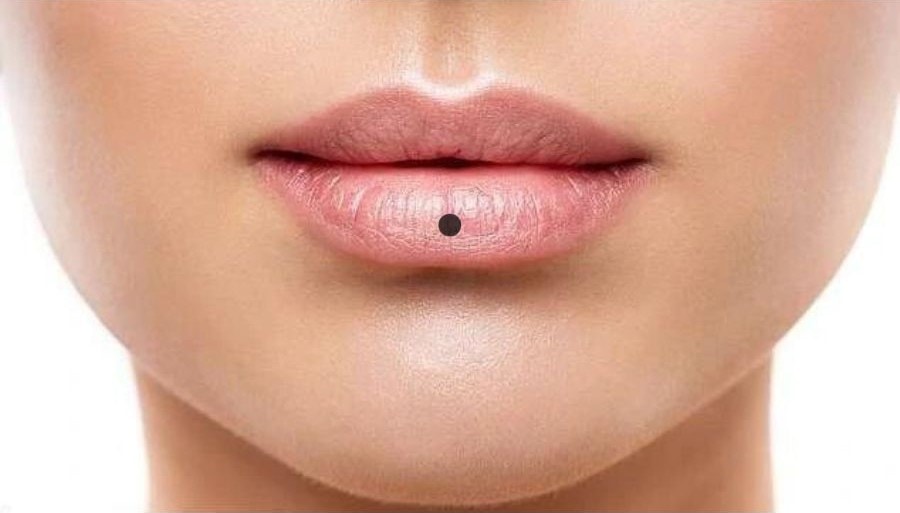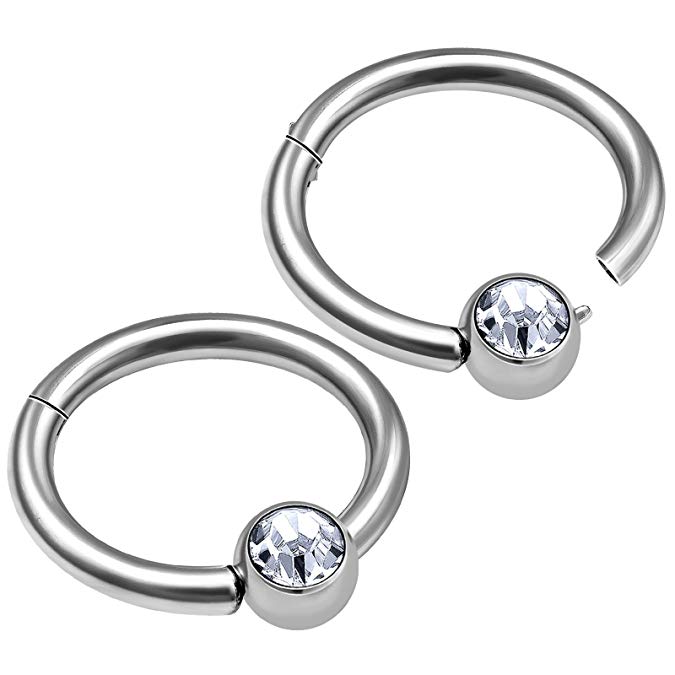
Table of Contents
The Labret piercing has become one of the most popular lip piercings over the years among both men and women alike due to its versatility and stylish look. It can be paired with other lip piercings to create an entirely new style such as the snake bites or the dolphin bites piercings and is a great way to add some sparkle to your smile as it highlights the beauty of the lower lip.
Whether you’re going for a stylish, sexy or rock star look, the Labret piercing is an excellent choice.
Here’s everything you need to know about the Labret piercing to help you decide whether it’s the right piercing for you.
What is the Labret Lip Piercing?

Labret piercing is traditionally a single perforation in the center just below the bottom lip but is not quite attached to the lip itself. Although it may be a simple type of lip piercing, there are a few variations that you can go for if you prefer a version that’s a little less traditional:
Side Labret Piercing

This is quite a popular modification of the labret and is located on either one or both sides of the lower lip. This piercing has its own variations such as the spider bites (two piercings close to each other on one side) or snake bites (two piercings on each side of the lip, resulting in four separate perforations).
Off-Center Labret Piercing

If you’re not one for symmetrical piercings, this is a good option for you. Although identical to the original labret this piercing is moved slightly off center just below the bottom lip.
Vertical Labret

This is also called ‘eskimo piercing’ in German and is done with a curved barbell replacing the universal labret. Since the piercing exits through the top of the bottom lip, there are two sides of jewelry visible, one just above the other.
Horizontal Labret Piercing

This piercing is very similar to the vertical labret as it has two visible ends of jewelry. However, unlike the vertical labret these are placed horizontally. Its location is right in the center of the lower lip with two holes next to each other.
Inverse Vertical Labret

This type of piercing, also known as ‘Ashley’, is done through the same procedure as the original labret but located entirely on the bottom lip. Therefore, there is only one visible jewelry side right in the middle of the lip.
Lowbret (Chin Piercing):

This is also a single perforation but is located far down below the bottom lip, where the lip tissue and the gum line meet. If you prefer to have your piercing stretched, try this type of piercing.
What’s the History of the Labret Piercing?

Labret piercings have a rich and varied history, threading through many cultures over the ages. The ancient Aztecs and Maya of Mesoamerica prominently showcased these piercings. Their elite members often adorned their labret piercings with lavish jewelry made from gold, jade, or obsidian, signalling their high rank.
In the Pacific Northwest, Native American tribes like the Tlingit and Haida valued labret piercings highly. The piercing’s size and style often revealed someone’s role or rank in the tribe. Various African cultures also embraced labret piercings. Men and women sported them, choosing materials like wood or ivory based on what was available locally.
Moving to the Arctic and Subarctic, tribes such as the Aleuts and Eskimo wore labret piercings, using the design and size to indicate social position or to mark important life events. By the late 20th century, interest in body modifications grew in the Western world, and labret piercings became increasingly popular. This trend, inspired by worldwide traditions and a broader acceptance of body art, made labret piercings a favorite among body art fans.
Different cultures attach different meanings to labret piercings. In one culture, it might mark a significant milestone, while in another, it could have a totally different significance. Recognizing and respecting these cultural differences is always important.
How to Choose Jewelry for Your Labret Piercing?

When choosing jewelry for your labret piercing, it’s important to consider gauge and length. This type of piercing is most commonly pierced with a 14 or a 16 gauge as they are thicker and there are a large variety of jewelry option available in those particular sizes. Some individuals do go for 18 gauge as well.
When it comes to length, the labret can be pierced at 7/16” or 3/8”. Women mostly go for a 3/8” whereas men are usually pierced with a 7/16”. However, this is something that depends on your anatomy and your piercer will determine the right length for you before piercing.
Both lengths are appropriate since they are longer and leave the piercing with extra room for swelling. Once the swelling in the initial 1-2 weeks subsides, the jewelry can be downsized after another 3-4 weeks.
There are two types of labret piercing jewelry:
1. Flat Back Studs

Also known as ‘Labret studs’, these are worn in a variety of piercings and are perfect for those that require a close fit. They are measured from the top of the flat disc to the base of the ball and the standard lengths for these are ¼” or 5/16”.
2. Threadless Labret Post

This jewelry type consists of a wonderful and convenient two part system which enables you to have a comfortable, secure and easy-to-change piece of jewelry. There is an end (or top) and a post (or shaft) and all the tops are changeable so that it makes it easy for you to mix and match the tops without taking out your piercing.
3. Captive Bead Rings

The captive bead ring has a ball or a bead which fits into a small opening in the circle of the ring. It’s a popular piece of jewelry as it conveniently allows the wearer to remove the ring by easily removing the captive bead which is held firmly in place so there is no chance of it falling out. There are also variations to this, like the hinged captive bead ring style featured above.
4. Circular Barbells

Circular barbells are quite popular for lip piercings and consist of a curved piercing bar which has a removable ball or an accessory on either end which makes them easy to insert and suitable to use for many types of piercings. If opting for this type of jewelry for your labret piercing, keep in mind that you must be careful of regular contact with the teeth as it can wear away gums and teeth.
Labret Piercing Pain – Can I Handle It?

The pain of the labret piercing depends on the type of piercing done. If the perforation is done on the lip itself, the pain would be much stronger since the lip is more sensitive than the skin. However, in comparison to other mouth/oral piercings, the labret is much less painful.
Since pain is subjective and every individual’s pain threshold is different, we cannot say exactly how painful the labret piercing would be for you. While it may hurt a lot for some people, others may not feel any pain at all. You would feel some discomfort, but it will generally feel like a very quick and intense pinch and then would be over in a matter of seconds. You will feel tenderness when touching the area for the first few days after piercing but this will go away.
Try not to worry too much about the pain and prepare yourself before you go in for your piercing. Attitude can have a negative or positive effect on the level of pain you feel so make sure you stay positive.
Labret Piercing Aftercare

This type of piercing requires more intense aftercare. Initial healing takes only about 3 to 5 weeks only, however, it can take up to a few months for the entire piercing to heal completely. The time taken to heal also depends on your individual characteristics such as your general health and your skin’s ability to regenerate.
To ensure that your piercing heals faster, stick to the aftercare rules as outlined by your piercer. Here are some basic tips to follow to help speed up the healing process:
- Maintain oral hygiene. Wash your mouth regularly since the mouth harbours many types of bacteria which can be harmful and can cause infection. Don’t forget to brush, floss and use mouthwash after every meal.
- Wash your clothing and your bedding regularly to keep the area bacteria free and clean.
- Avoid touching the piercing as much as possible. If needed, wash hands and dry them thoroughly before you touch it.
- Use sea salt soaks or saline to soak the piercing for 5-10 minutes once a day or more to speed up the healing process.
- Watch out for teeth damage which can occur when the jewelry rubs the teeth or the gum from the inside.
- Watch what you eat. Spicy or acidic foods can cause pain as the piercing heals.
Labret Piercing Cost
The cost of the labret piercing varies according to the type of piercing you get. You can have it done for as cheap as $20 or as expensive as $100. However, don’t let price affect your choice of piercer. Make sure you find an established piercer who knows exactly what they are doing. An inexperienced piercer may use equipment that can cause damage, may pierce in the wrong location or may fit you with a stud that’s too small so don’t make the mistake of opting for the wrong piercer because of cost.
Pros and Cons of Labret Piercing

If you’re not sure whether or not the labret piercing is the right choice for you, weighing the pros and cons might help you to make your decision.
Labret Piercing Pros:
- This is a simple piercing but can give you a ‘cool’ and sexy look.
- It heals faster than most other kinds of piercings.
- This piercing is so versatile there are many variations of it and many ways to dress it up.
- Adds a distinct look to your facial features.
- Typically heals faster than some other piercings.
Labret Piercing Cons:
- It can get caught on your teeth until you get used to eating with it.
- Infections can occur easily during the healing period.
- If you have any allergies to certain types of metals, you may want to avoid piercing your lip altogether.
If you really want to have a labret piercing, then there’s no reason why you shouldn’t. Before getting one, however, you may want to consider how convenient it will be for you. Once you’re sure that this is the right choice for you, get your labret piercing done and enjoy your new look!









